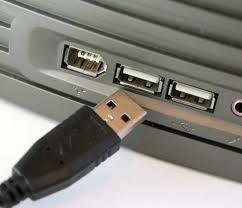It is the process of varying one or more properties of a high-frequency periodic waveform, called the with a modulating signal which typically contains information to be transmitted. This is done in a similar fashion to a musician mudulating a tone from a musical instrument by varying its volume, timing and pitch.
Demodulation
Demodulation is the act of extracting the original information-bearing signal from a modulated carrier wave. A demodulator is an electronic circuit that is used to recover the information content from the modulated carrier wave.
Bandwidth
Bandwidth a measure of the width of a range of frequencies, measured in hert. Bandwidth or digital bandwidth: a rate of data transfer, bit rate or throughput, measured in bits per second. Spectral linewidth: the width of an atomic or molecular spectral line, measured in hertz. Bandwidth the width of the non-zero terms around the diagonal of a matrix.
TCP/IP
The TCP/IP model is a description framework for computer network protocols. It evolved from ARPANET, which was the world's first wide area network and a predecessor of the Internet. The TCP/IP Model is sometimes called the Internet Model or the DoD Model. The TCP/IP model, or Internet Protocol Suite, describes a set of general design guidelines and implementations of specific networking protocols to enable computers to communicate over a network.
Node
A node can be a computer or some other device, such as a printer. Every node has a unique network address, sometimes called a Data Link Control (DLC) address or Media Access Control (MAC) address.
A node can be a computer or some other device, such as a printer. Every node has a unique network address, sometimes called a Data Link Control (DLC) address or Media Access Control (MAC) address.
Client
A client is an application or system that accesses a remote service on another computer system, known as a server, by way of a network. The term was first applied to devices that were not capable of running their own stand-alone programs, but could interact with remote computers via a network.
A client is an application or system that accesses a remote service on another computer system, known as a server, by way of a network. The term was first applied to devices that were not capable of running their own stand-alone programs, but could interact with remote computers via a network.
Server
Server is a program that operates as a socket listener. The term server is also often generalized to describe a host that is deployed to execute one or more such programs. A server computer is a computer, or series of computers, that link other computers or electronic devices together. They often provide essential services across a network, either to private users inside a large organization or to public users via the internet.
Server is a program that operates as a socket listener. The term server is also often generalized to describe a host that is deployed to execute one or more such programs. A server computer is a computer, or series of computers, that link other computers or electronic devices together. They often provide essential services across a network, either to private users inside a large organization or to public users via the internet.
Network Operating Systems
A networking operating system is the software that runs on a server and enables the server to manage data, users, groups, security, applications, and other networking functions. The network operating system is designed to allow shared file printer acess among multiple computers in a network, typically a local area network, a private netowork or to other networks.
A networking operating system is the software that runs on a server and enables the server to manage data, users, groups, security, applications, and other networking functions. The network operating system is designed to allow shared file printer acess among multiple computers in a network, typically a local area network, a private netowork or to other networks.
Network Administrator
A network administrator is a person responsible for the maintenance of computer hardware and software that comprises a computer network. This normally includes deploying, configuring, maintaining and monitoring active network equipment.







































